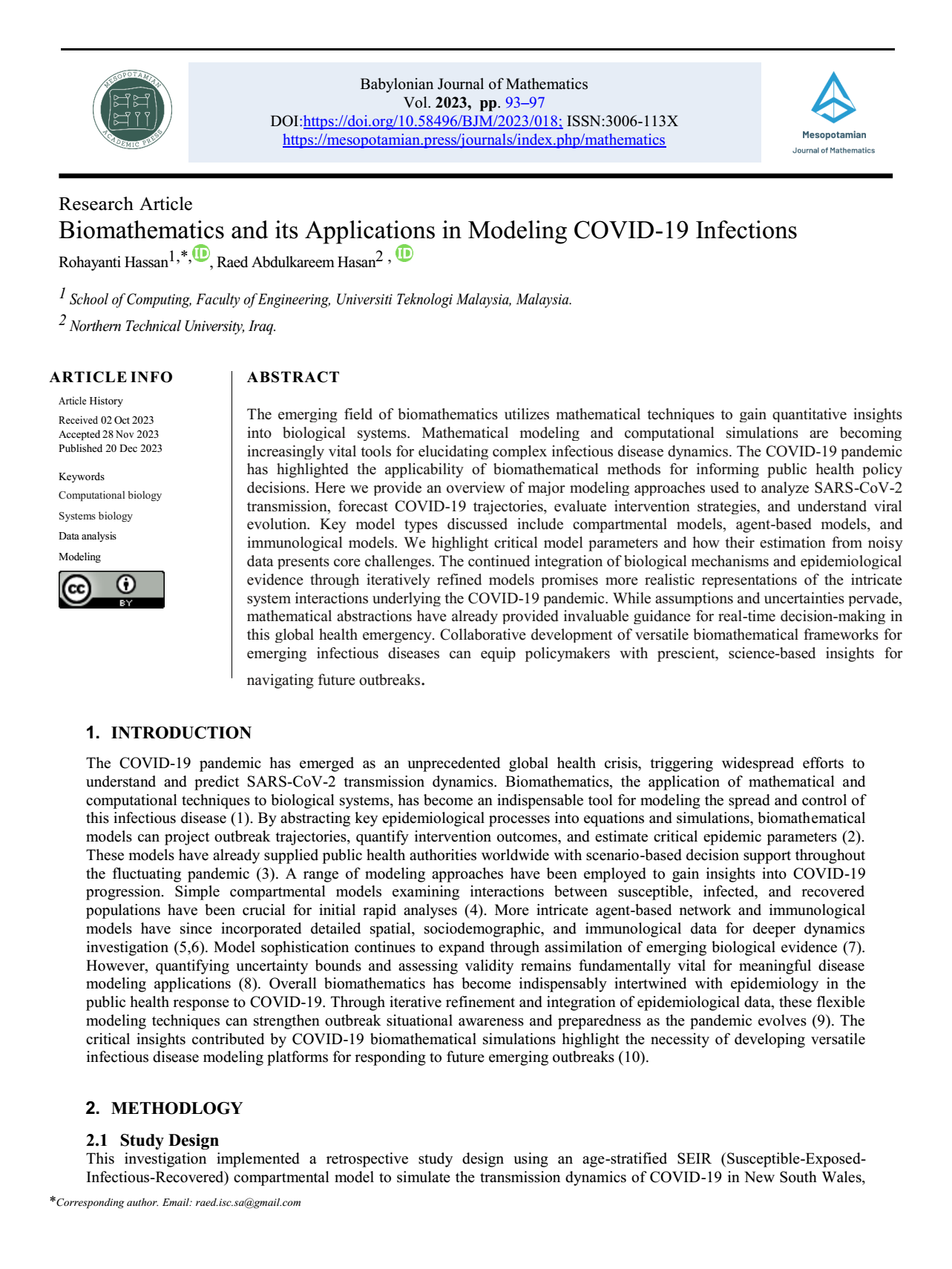Biomathematics and its Applications in Modeling COVID-19 Infections
Main Article Content
Abstract
The emerging field of biomathematics utilizes mathematical techniques to gain quantitative insights into biological systems. Mathematical modeling and computational simulations are becoming increasingly vital tools for elucidating complex infectious disease dynamics. The COVID-19 pandemic has highlighted the applicability of biomathematical methods for informing public health policy decisions. Here we provide an overview of major modeling approaches used to analyze SARS-CoV-2 transmission, forecast COVID-19 trajectories, evaluate intervention strategies, and understand viral evolution. Key model types discussed include compartmental models, agent-based models, and immunological models. We highlight critical model parameters and how their estimation from noisy data presents core challenges. The continued integration of biological mechanisms and epidemiological evidence through iteratively refined models promises more realistic representations of the intricate system interactions underlying the COVID-19 pandemic. While assumptions and uncertainties pervade, mathematical abstractions have already provided invaluable guidance for real-time decision-making in this global health emergency. Collaborative development of versatile biomathematical frameworks for emerging infectious diseases can equip policymakers with prescient, science-based insights for navigating future outbreaks.
